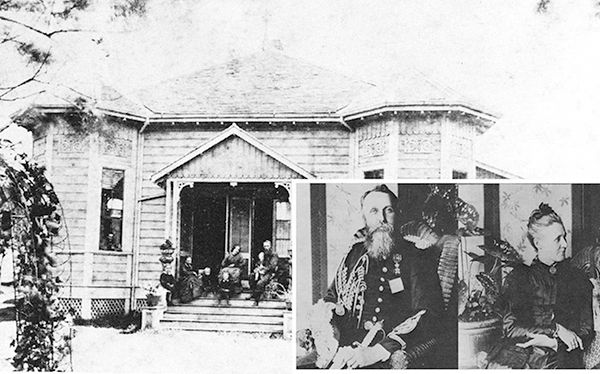For many years during the early 1900s, William Hyde Rice (1846-1924) — the governor of Kauai during the reign of Queen Liliuokalani — and his wife, Mary Waterhouse Rice (1847-1933), invited family members and friends to a traditional Christmas celebration at Hale Nani — their Lihue home situated off Rice Street, not far from today’s west entrance into Ewalu Street.
A one-story house built with native woods set within a marvelously landscaped garden and featuring deep lanais and a welcoming porte-cochere, Hale Nani was famed as a center of hospitality.
Its spacious interior was comprised of a large living room, a hall, a dining room, music room, two kitchens, pantries and six bedrooms.
On Christmas Day, three white damask-covered tables, one each in the dining room, hall and on the lanai, where children ate, were set with porcelain dinner plates and decorated with crystal bowls filled with red carnations and sweet-scented vines and ferns.
At noon, the Rice’s talented daughter-in-law, Mrs. William Henry Rice, began singing the blessing, and soon everyone joined her in song.
Oranges or red apples filled with fruit cocktail made up the first course.
Oyster soup followed, prepared from live oysters shipped from San Francisco in barrels of brine mixed with oatmeal that the oysters consumed en route to Nawiliwili, where they arrived fattened and fresh.
The main course of roast turkey with chestnut dressing, mashed potatoes, creamed onions, canned peas and asparagus, and cranberry jelly and sauce was then served at each table.
Plum pudding dessert complemented the Christmas feast, after which diners strolled to the music room and its Norfolk pine alight with candles and sparkling ornaments.
Gifts were exchanged and children ran outside to play in the surrounding gardens. Little ones took their naps, while grownups spent time talking.
Later, Hawaiian serenaders arrived — four or five men in a choral group — to sing old Hawaiian melodies in the Hawaiian language, a fitting way to end a merry Christmas Day.





